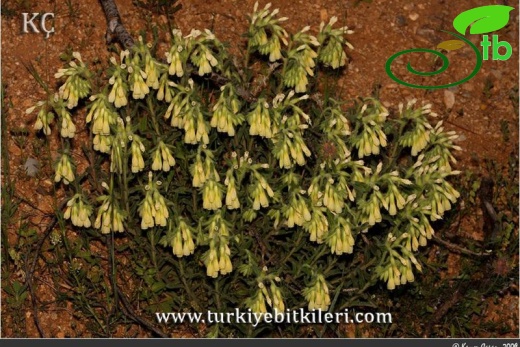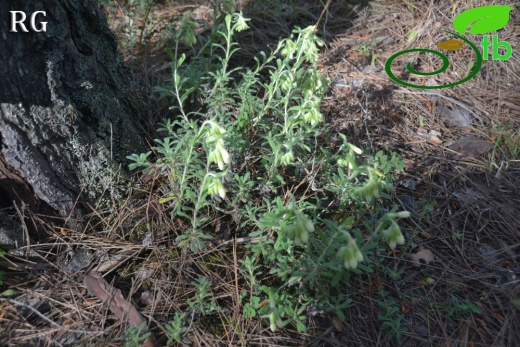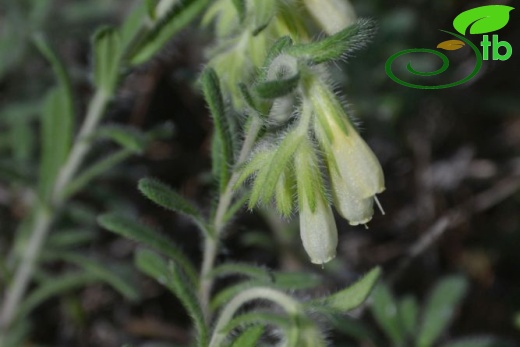Onosma bracteosa
Onosma bracteosa
Küpeli emcek
Perennial. Stems usually numerous, 15-30 cm, simple or little-branched, patent-setose and with short dense hairs. Basal leaves forming subcaespitose rosettes, often shrivelled at flowering time, 20-50 x 3-10 mm, lanceolate to spathulate, petiolate or sessile; cauline 15-50 x 2·5-7 mm, oblong to oblong-lanceolate, obtuse to acute. Basal and lower cauline leaves adpressed to patent-setose on stellate-hairy tubercles, upper cauline with setae on ± glabrous tubercles above and on midrib beneath, surface sparsely hairy beneath. Inflorescence of 1-3 terminal cymes, scorpioid at first, becoming elongated and nearly straight. Bracts linear to linear-lanceolate, longer than calyx. Pedicels very short. Calyx 10-12 mm in flower, to 23 mm in fruit, lobes linear, acute. Corolla cream to pale yellow, 18-22 mm, cylindrical-campanulate to clavate-campanulate, patent-pillose. Anthers included, much shorter than filaments. Nutlets 3-4 x 2·5-3 mm, ovoid, with ventral keel and subacute slightly incurved beak, pale grey. Fl. 5-7. Fallow fields, montane steppe, limestone rocks, steppe, 300-2100 m.
Endemic. Ir.-Tur. element.




